John-Lewis Zinia Zaukuu, Janos Soos, Zoltan Kovacs
Tokaj wines are Hungarian wines produced from noble rotten berries or botrytized berries and are culturally regarded as national treasures in Hungary for their historical significance, unparalleled sensory attributes and organoleptic properties. The unique flavours and rich antioxidant content of Tokaj wines have been attributed to the presence of the mould Botrytis cinerea which, grows naturally on the berries in the Tokaj region of Hungary. Depending on the quality of the berry and maceration period, many different specialities of Tokaj wine can be produced. The wines are all required to be free from any type of sweeteners or grape concentrate as this alters exceptional expected quality of the wine.
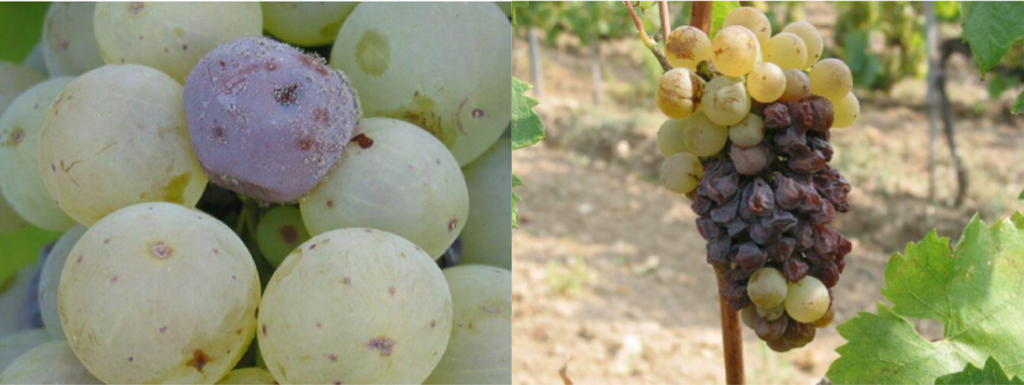
Many methods including diverse chromatographic technique have been used to monitor wine adulteration with sugar, methanol, ethanol, glycerol etc, but not grape concentrate although grape concentrate adulteration in Tokaj wine is strongly suspected. Also, some of the methods can be relatively slow in comparison to some other advanced instruments that are recently being hailed as superior quality control tools. They include the electronic tongue (e-tongue): a pattern recognition tool equipped with high sensitivity man made sensors for qualitative and quantitative analysis and near infrared spectroscopy (NIRS): a non-invasive tool capable of giving a complete overview of any analyte by fingerprinting the constituents of the sample based on its interaction with light in the electromagnetic spectrum. When spectroscopy is used in an aqueous system, water absorption bands in the 2nd overtone enables water to act as a molecular mirror to expose certain peculiar details about the analyte. E-tongue and NIRS are rapid, easy to install and use, requires no reagents or waste management (affordable) and both give reliable real-time results. This paper demonstrates the feasibility of these instruments in detecting low concentrations of grape concentrate adulteration in low grade Tokaj Forditas wine that were manipulated to have the same sugar concentrations as higher grade Tokaj Aszu wines.
Basically, four Tokaj wines of different quality grades (Figure 2) were acquired from wine experts in the Tokaj region of Hungary.

To mimic what was suspected to be happening in the markets, the sugar contents of all the wines were determined and based on that, the lower grade wines (Ford I and Ford II) were adulterated with the adulterant (grape must concentrate (G.M.C)) in four adulteration levels (C1 -C4) to have the same sugar concentration as the authenticate high quality wines (Table 1). Another form of adulteration was also explored; sucrose was added to Tokaj base wine before its refermentation. This wine was not macerated with botrytized berries and was referred to as “Base_sugar”. It was meant to represent complex forms of adulteration.
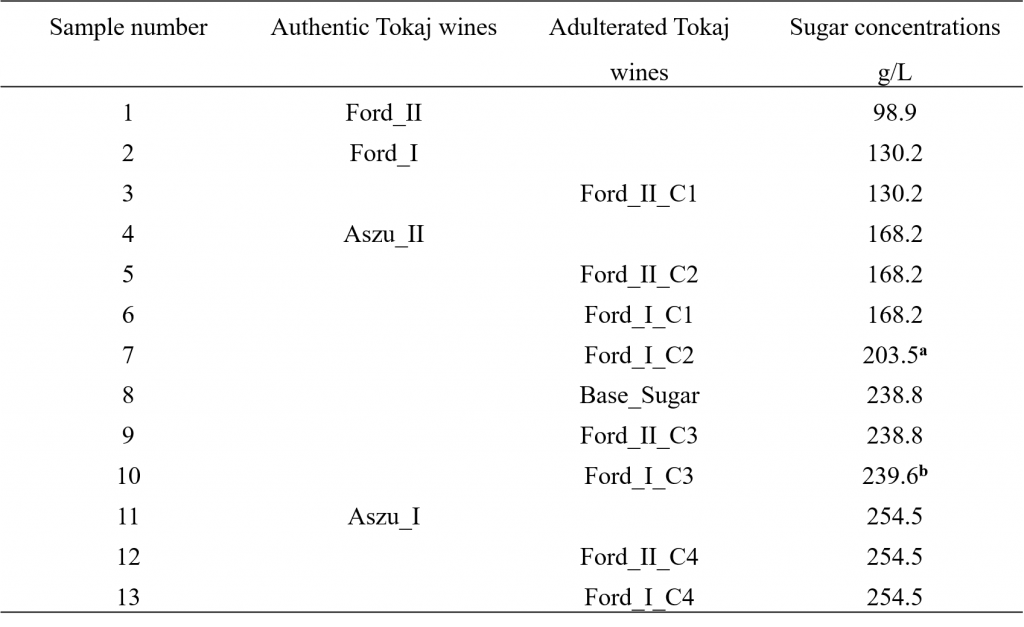
a: the value is derived from (Ford_I + Base_Sugar)/2
b: the value is derived from (Aszu_I + Base_Sugar)/2
All the samples in the study were prepared in triplicates, analyzed with an Alpha Astree potentiometric e-tongue and scanned with two different near infrared spectrometers (handheld and benchtop). For NIRS measurements, three consecutive scans of each sample were recorded with a cuvette providing 0.4mm layer thickness of the tested liquid sample. Spectral pretreatment was performed with Savitzky-Golay smoothing filter using 2nd order polynomial and multiplicative scatter correction (MSC) after raw spectra analysis. Principal component analysis (PCA) was used to identify interrelationships and patterns between the wine samples in the e-tongue and NIRS dataset. Discriminant analysis (LDA) was used for multi-class classification of the different wine samples in the e-tongue dataset and, aquagrams from spectral analysis in the 2nd overtone (1300 – 1600nm) were studied in the NIRS dataset to make possible correlations with characteristic water bands and water matrix coordinates (WAMACs). Partial least squares regression (PLSR) was used to test the predictive significance of regression on the sugar content in both datasets.
From PCA, both e-tongue (Figure 3) and the two different spectrometers (Figure 4) could separate the adulterated wines from their non-adulterated counterparts. All the wines could be classified in LDA and predicted with a 100% accuracy, with a clear separation between the adulterated and non-adulterated wines (Figure 5).
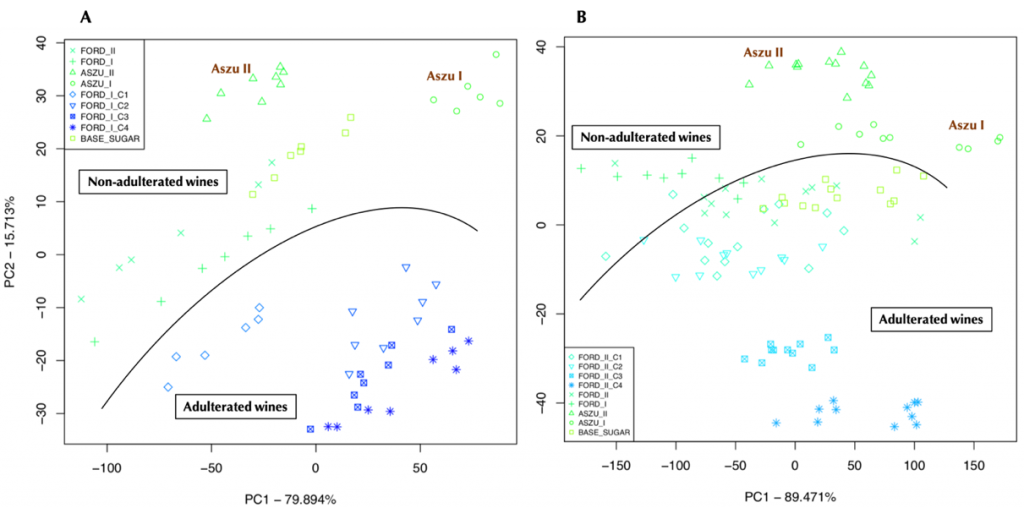
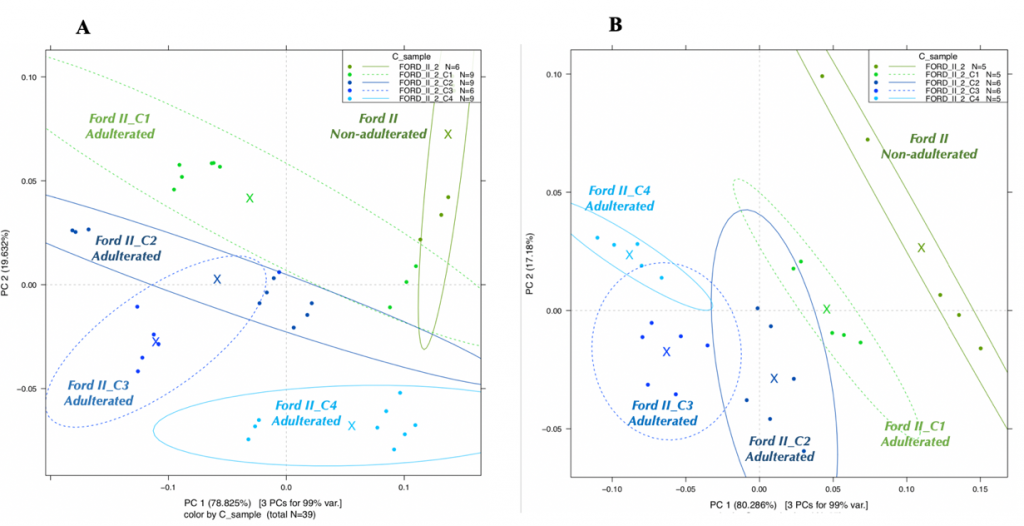
Important absorption bands in aquagrams showed decreasing tendency of less hydrogen bounded water (1342 and 1385 nm) with the increasing adulteration level (Figure 6). All the instruments produced good PLSR models for predicting the adulteration level of Tokaj Forditas wines with coefficient of determination (R2CV) between 0.87-0.99 and low errors (RMSECV), after three-fold cross validation. E-tongue produced the best with a PLSR models.
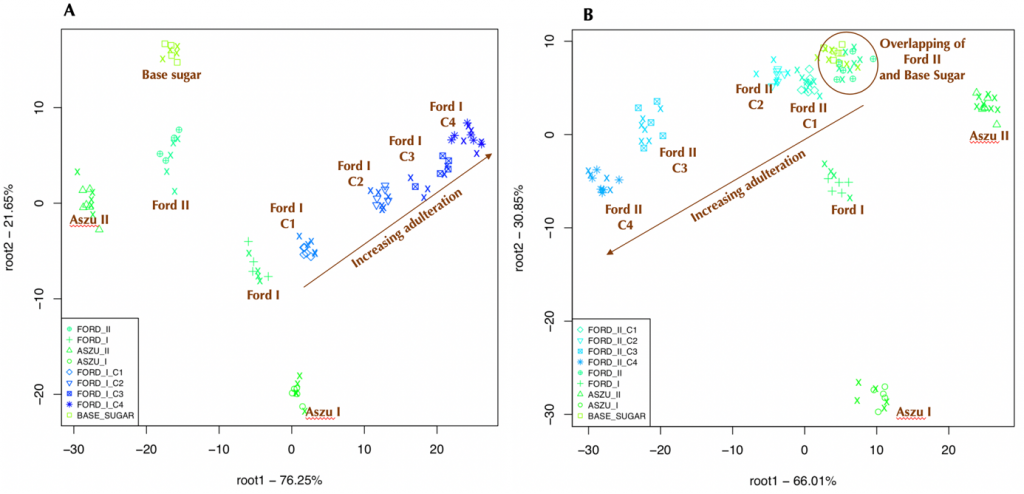
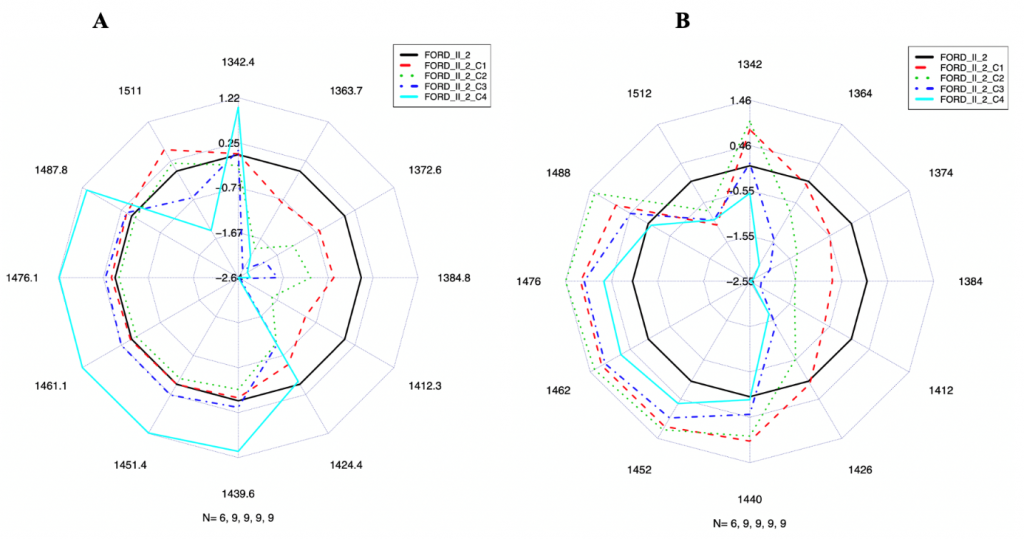
Zaukuu, John-lewis Z ; Soos, Janos ; Bodor, Zsanett ; Felföldi, József ; Magyar, Ildikó ; Kovacs, Zoltan: Authentication of Tokaj Wine ( Hungaricum ) with the Electronic Tongue and Near Infrared Spectroscopy. In: Journal of Food Scie Bd. 84 (2019), Nr. 12, S. 3437–3444. 10.1111/1750-3841.

John-Lewis Zinia Zaukuu currently works at the Department of Physics and Process Control, Szent István University, Budapest as a PhD candidate. John-Lewis does research in Food Science and Food Adulteration. He has over 30 international conference presentations and eight Journal publications including impact factor journal publications. He has also co-authored two book chapters He is a member (student) of the Institute of Food Technologist. He is currently part of a major project on the application of electronic tongue and Infrared Spectroscopy to detect food fraud. Lewis is interested in all aspects of food science with major focus on quality control and quality assurance.
Email: izaukuu@yahoo.com or zaukuu.johnlewis.zinia@hallgato.uni-szie.hu
Orcid: https://orcid.org/0000-0002-2058-4416
Research gate: https://www.researchgate.net/profile/John_Lewis_Zaukuu2

Zoltan Kovacs currently works at the Department of Physics and Control, Szent István University, Budapest. Dr. Kovacs won several research awards and fellowships including pre- and post-doctoral awards and National Excellence Fellowships. Recently he is an awardee of the János Bolyai Research Scholarship of the Hungarian Academy of Sciences and József Farkas Excellence Award of the Faculty of Food Science, Szent Istvan University in 2018. His research group with his Leadership, won the Excellence Research Group grant for their research to develop measurement methods for quick determination of adulteration in various food products in the same year. Currently, Dr. Kovacs collaborates and leads different national and international research projects and as a result of his extensive international network and research activity, he was promoted to the position of Vice Dean for International Affairs of the Faculty of Food Science, Szent István University in 2019.
Email: kovacs.zoltan3@etk.szie.hu
Orcid: https://orcid.org/0000-0003-0641-8830
Research gate: https://www.researchgate.net/profile/Zoltan_Kovacs3

